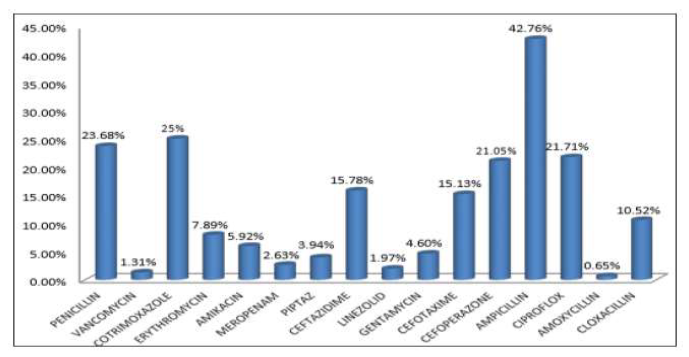A One Year Cross Sectional Study on Surgical Site Infections (Ssi), Associated Risk Factors and Antimicrobial Sensitivity Patterns in A Government Tertiary Care Teaching Hospital, Egmore Chennai
Main Article Content
Abstract
Background: Surgical Site Infections (SSI) is one of the most commonly reported nosocomial infection which has an adverse impact on the hospital as well as on the patient.
Objectives:
- To study the prevalence of Surgical Site Infections.
- To identify the risk factors associated with the development of SSIs.
- To identify the etiological pathogens and their antimicrobial susceptibility
Methodology: We conducted a one-year cross sectional study on SSI in IOG. 152 post lscs cases who developed SSI were included in the study. Factors like age, duration of surgery, co-morbidities, type of skin suture, pathogen and their antimicrobial sensitivity associated with SSI and their outcomes were studied. Swabs were collected from the infected surgical wounds and processed by the conventional microbiological methods. Antimicrobial susceptibility was done by Kirby-Bauer disc diffusion method and interpretation done by CLSI guidelines 2020.
Results: Among the 6650 cases of LSCS done in our hospital in the year 2021, 152 cases developed surgical site infection. Of which 67% of the population comprise of the age group 18-30 yrs, anemia, diabetes, hypetension were the predominant risk factors associated with SSI. About 37% of the cases needed wound resuturing remaining 63% of the cases were medically managed. The common pathogen encountered with SSI were E. coli, Klebsiella and MRSA. Around 82% of the organism were sensitive to Amikacin and 48% of them were sensitive to Gentamycin, about 43% of the pathogen were resistant to Ampicillin.
Conclusions: The overall prevalence of SSI in our hospital was 2.28% in the year 2021. Early diagnosis and prompt treatment of risk factors like anemia, diabetes and hypertension may prevent SSI and improve outcomes in infected cases. Decrease in the duration of surgery, decreases the incidence of SSI. Empirical use of antibiotics based on the common organism encountered and their sensitivity patters improves the outcome of SSI. Peroidic surveillance of SSI and measures to prevent it to be done on regular basis.
Article Details
References
Wong ES. Surgical site infections. In: Mayhall CG, editor. Hospital epidemiology and infection control. 1st ed. U.S.A: Williams and Wilkins; c1996. p.154-74.
Koneman EW. Allen SD, Janda WM, Schreckenberger PC, Winn WC Jr. editors. Color Atlas and Textbook of Diagnostic. Microbiology. 5th Ed. Lipincott-Raven Publishers: Philadelhia: Pa; 1997.
Bauer AW, Kirby WM, Sherris JC, Turck M. Antibiotic susceptibility testing by a standard single disc method. Am J Clin Pathol. 1966; 45:493-6.
Clinical and Laboratory Standards Institute (CLSI). Performance standards for antimicrobial susceptibility testing. 2020.
Center for Disease Control, National Nosocomial Infections Study Quarterly Report, First and Second Quarters; Altlanta, CDC, 1973.
